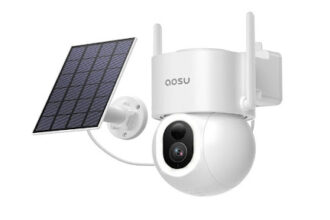Key Components of Cloud Architecture Explained
Cloud architecture is the design and structure of a system that integrates different cloud resources, technologies, and services to provide scalable and efficient solutions for businesses. It enables companies to leverage cloud services for data storage, computing, and networking, helping them manage resources dynamically. In this article, we will dive into the essential components that make up cloud architecture and discuss how these elements work together to deliver a reliable and secure cloud environment.
To build a strong and scalable cloud system, it’s essential to understand enterprise cloud computing architecture. This architecture outlines how different cloud components, such as storage, computing resources, and networks, work together to provide seamless services to businesses. To dive deeper into this subject, visit the detailed guide on enterprise cloud computing architecture.
Core Components of Cloud Architecture
Cloud architecture is composed of several vital components that work together to support a wide range of applications and services. These include:
Frontend Platform
The frontend platform comprises the user interfaces and applications that users interact with when using cloud-based services. It allows users to submit requests and access cloud services in an intuitive and efficient manner. Frontend platforms can include web interfaces, mobile apps, and dashboards that provide access to cloud functionalities.
Backend Platform
The backend platform refers to the servers, storage systems, and databases that process, manage, and store data in the cloud. This includes the infrastructure that supports the execution of applications, data management, and service provisioning. The backend platform is typically composed of virtualized resources, such as virtual machines (VMs) or containers, which allow for scalability and flexibility.
Cloud Delivery Model
Cloud services are delivered through different models, such as IaaS (Infrastructure as a Service), PaaS (Platform as a Service), and SaaS (Software as a Service). Each model offers distinct benefits and allows businesses to choose the level of control, flexibility, and management they require. For instance, IaaS provides virtualized computing resources, PaaS offers a platform for developers to build and deploy applications, and SaaS delivers fully managed software applications over the cloud.
Network
The network in cloud architecture refers to the infrastructure that connects the frontend and backend components, enabling the seamless transmission of data across various cloud services. It includes technologies like virtual private networks (VPNs), content delivery networks (CDNs), and load balancers, which help optimize connectivity and enhance performance.
Compute Resources: The Processing Power
Cloud architecture relies heavily on the efficient use of compute resources. These resources provide the processing power required to run applications, services, and data processing tasks in the cloud.
Virtual Machines (VMs)
Virtual machines (VMs) are isolated environments that run applications and services within the cloud. VMs simulate physical computers and allow for the efficient allocation of resources without the need for physical hardware. This virtualization technique is crucial for enabling multi-tenant environments, where multiple users can run their workloads independently on the same physical machine.
Containers
Containers are lightweight units that package applications and their dependencies, enabling them to run consistently across different environments. Unlike traditional VMs, containers share the host system’s operating system, making them more efficient and faster to deploy. They are especially useful for microservices architectures, where each service can be encapsulated in its container, allowing for better scalability and easier updates.
Serverless Computing
Serverless computing is a cloud architecture model that allows businesses to run code without managing servers. This model automatically scales resources based on demand, making it ideal for applications that experience fluctuating workloads. Serverless computing eliminates the need to provision and manage infrastructure, allowing developers to focus on writing code while the cloud provider handles resource allocation and scaling.
Storage Solutions: Managing Data Efficiently
Data storage is a critical aspect of cloud architecture, and choosing the right storage solution is essential for managing large volumes of data effectively.
Object Storage
Object storage is an ideal solution for managing unstructured data, such as images, videos, and backup files. It stores data as objects, which include the data itself, metadata, and a unique identifier. This type of storage is highly scalable and cost-effective, making it suitable for large-scale applications and services that handle diverse data types.
Block Storage
Block storage provides raw storage volumes that can be used by databases and applications. It is typically used for structured data and offers high performance and low-latency access to data. Block storage is ideal for applications that require fast, consistent access to large datasets, such as transactional systems or database servers.
File Storage
File storage is a traditional method of organizing and storing files within a file system. It allows multiple users or applications to access the same files through a shared network. While file storage is not as scalable as object storage, it remains a popular choice for applications that rely on legacy file systems or need a familiar way to organize and access data.
Networking: Ensuring Seamless Connectivity
Networking in cloud architecture plays a crucial role in ensuring that data flows seamlessly between different cloud components and users. A well-designed network enables high availability, performance, and reliability in cloud services.
Virtual Private Cloud (VPC)
A Virtual Private Cloud (VPC) is a private network within a cloud environment that is isolated from other networks. It allows businesses to define their own IP address range, subnets, and routing policies. VPCs provide enhanced security and control over network traffic, making them an essential component for enterprises that require strict data privacy and compliance.
Load Balancers
Load balancers distribute incoming traffic across multiple servers to ensure that no single server becomes overwhelmed. They are critical for maintaining high availability and ensuring optimal performance for applications and services. By distributing traffic evenly, load balancers help prevent bottlenecks and downtime during peak usage periods.
Content Delivery Networks (CDNs)
Content Delivery Networks (CDNs) cache content closer to end users to reduce latency and improve load times. CDNs store copies of static content, such as images, videos, and web pages, on servers distributed across various geographic locations. This ensures that users can access content quickly, regardless of their location.
Security: Protecting Cloud Resources
Security is one of the most important considerations in cloud architecture. A robust security framework ensures that cloud resources are protected from unauthorized access and potential threats.
Identity and Access Management (IAM)
Identity and Access Management (IAM) is a framework for managing user identities and controlling access to cloud resources. IAM enables organizations to define roles and permissions for different users, ensuring that only authorized individuals can access sensitive data or perform specific actions within the cloud environment.
Encryption
Encryption is used to protect data both at rest and in transit. By encrypting data, businesses ensure that sensitive information remains secure even if it is intercepted during transmission or compromised in storage. Encryption is a fundamental component of cloud security, providing confidentiality and integrity for cloud-based resources.
Firewalls and Security Groups
Firewalls and security groups are used to monitor and control incoming and outgoing network traffic. They help prevent unauthorized access to cloud resources by enforcing security policies based on IP addresses, protocols, and ports. These tools are essential for protecting cloud applications from cyber threats.
Building a Robust Cloud Architecture
Building a robust cloud architecture requires a deep understanding of its core components. From compute resources and storage solutions to networking and security, every element plays a vital role in ensuring that cloud services are efficient, scalable, and secure. By effectively integrating these components, businesses can build a cloud infrastructure that meets their operational needs and supports growth in the digital age.

















